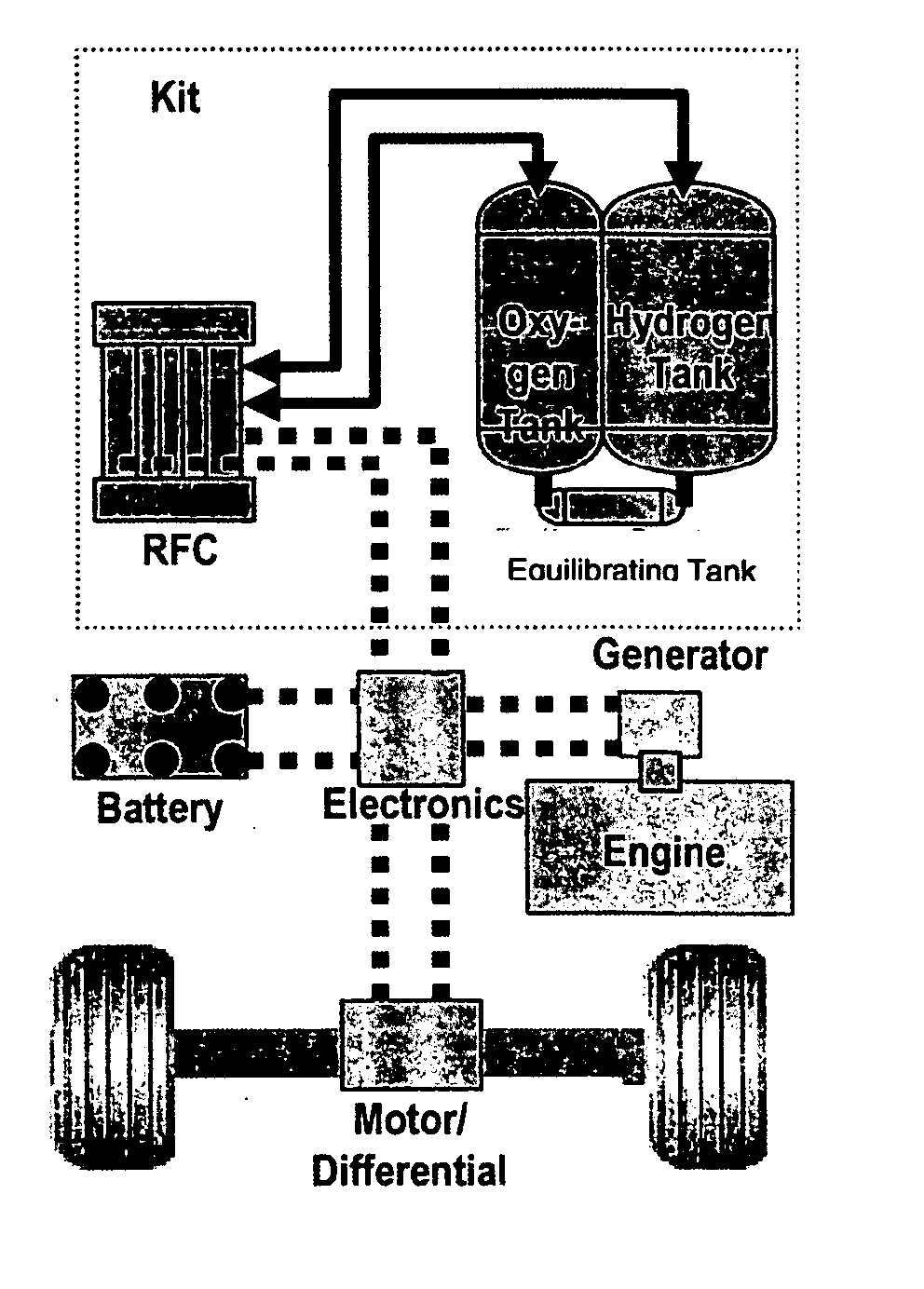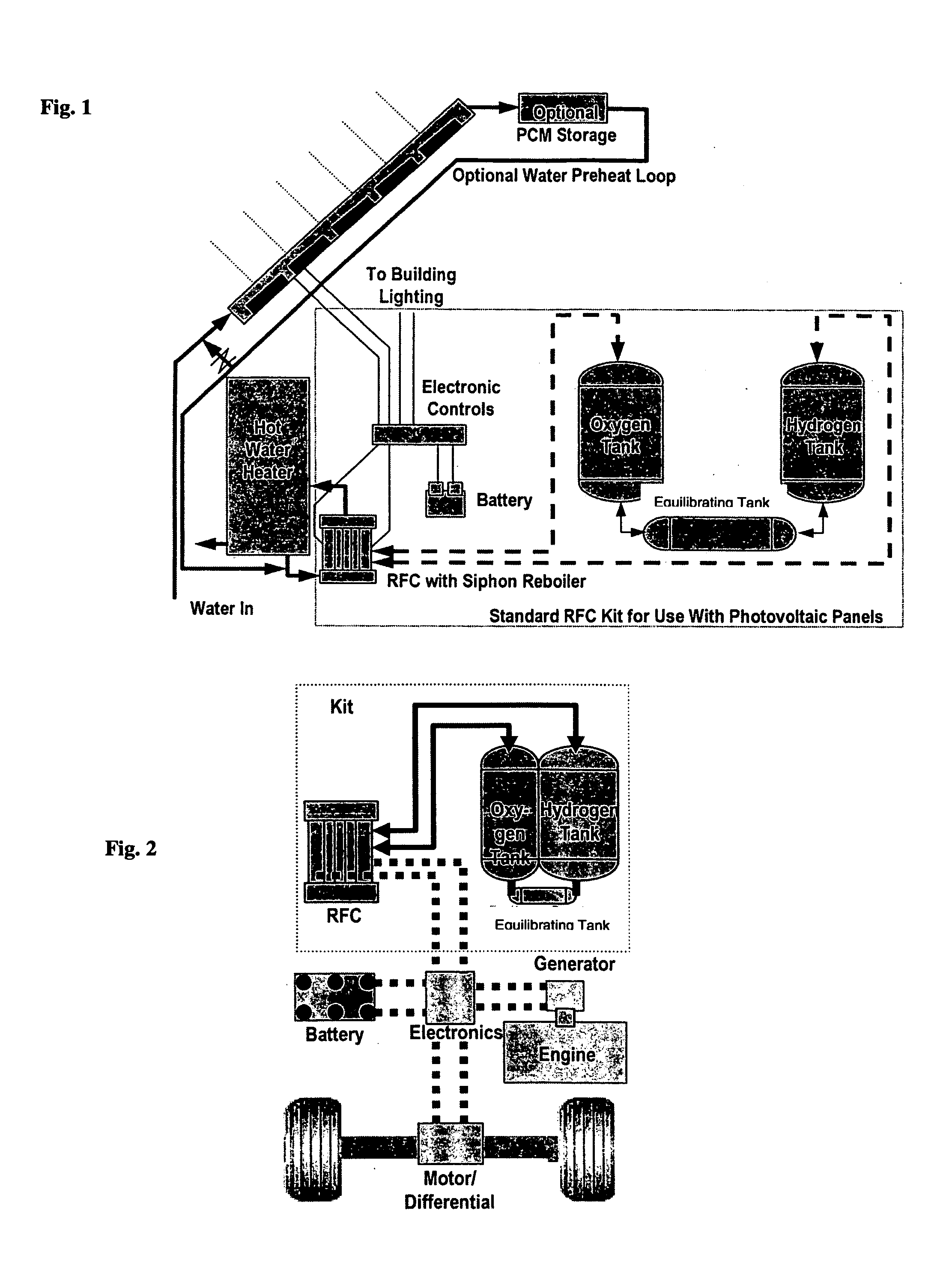Regenerative fuel cell technology
a fuel cell and regenerative technology, applied in the direction of battery/fuel cell control arrangement, secondary cell servicing/maintenance, cell components, etc., can solve the problems of increasing compression costs, reducing catalyst costs associated with fuel cell operation at higher pressure, and increasing costs of unreacted oxygen discharge from the fuel cell. , to achieve the effect of increasing the rate constant and being less expensiv
- Summary
- Abstract
- Description
- Claims
- Application Information
AI Technical Summary
Benefits of technology
Problems solved by technology
Method used
Image
Examples
Embodiment Construction
[0037] The Components of Fuel Cell Embodiments: In a fuel cell system that produces electrical power through electrochemical reactions of oxygen and a fuel, the fuel cell system includes at least one fuel cell stack. The fuel cell stack is enclosed in a high pressure containment such as a pressure vessel. The fuel cell system is comprised of at least: a fuel cell stack, an oxidant entrance and a fuel entrance, media (such as membranes or salt bridges) substantially permeable to the transport of ions through said media / membrane while being substantially impermeable to the transport of electrons, each single said medium having an anode side and a cathode side, cathodes contacting the cathode sides of the membranes, anodes contacting anode sides of the membranes, and a circuit connected to both the cathode and anode capable of conducting electrons but substantially impermeable to the transport of ions. Both the cathode and anode have catalysts that promote reactions involving the relea...
PUM
| Property | Measurement | Unit |
|---|---|---|
| power | aaaaa | aaaaa |
| power | aaaaa | aaaaa |
| power | aaaaa | aaaaa |
Abstract
Description
Claims
Application Information
 Login to View More
Login to View More - R&D
- Intellectual Property
- Life Sciences
- Materials
- Tech Scout
- Unparalleled Data Quality
- Higher Quality Content
- 60% Fewer Hallucinations
Browse by: Latest US Patents, China's latest patents, Technical Efficacy Thesaurus, Application Domain, Technology Topic, Popular Technical Reports.
© 2025 PatSnap. All rights reserved.Legal|Privacy policy|Modern Slavery Act Transparency Statement|Sitemap|About US| Contact US: help@patsnap.com



